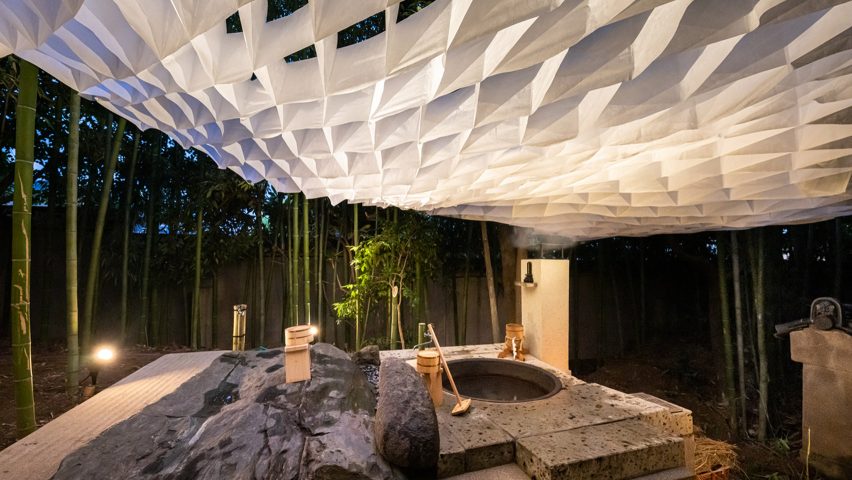
Kengo Kuma creates pavilion supported by live bamboo at Kyoto temple
Architecture studio Kengo Kuma and Associates has built a pavilion with a textile roof supported by bamboo stalks on the grounds of a temple in Kyoto, Japan.
Named Kyoto Yudo Pavilion, the structure designed by Kengo Kuma and Associates was built in a bamboo grove within the temple site.
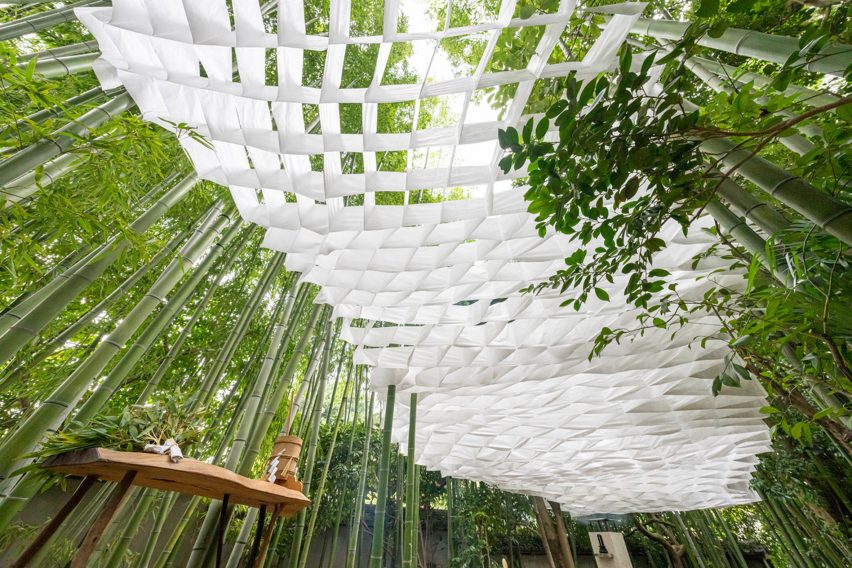
The studio used Tyvek, a synthetic fabric made from polyethene fibres, to weave a geometric pattern of diamonds that is supported by the living bamboo.
"When I saw the beautiful bamboo forest, I wondered if I could use the bamboo as a pillar," said Kengo Kuma and Associates founder Kengo Kuma.
"By leaving as much of the living bamboo as possible and using it as a support, I was able to eliminate the vertical element," he told Dezeen.
"By weaving the Tyvek into three dimensions, I transformed a simple flat surface into a three-dimensional work of art."
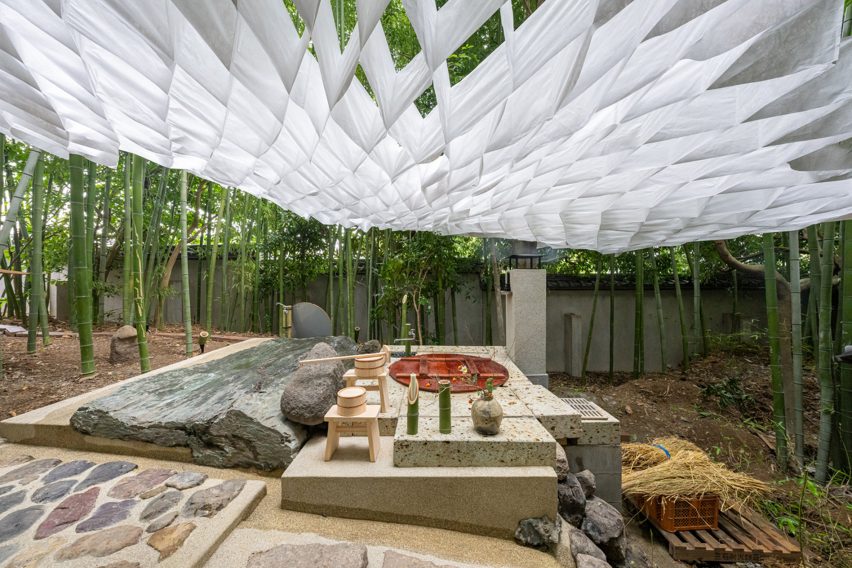
The fabric was tied to the bamboo stalks that surround the opening in the grove while an outdoor bath was placed at the centre of the clearing to form a spa-like area.
Inside the Kyoto Yudo Pavilion dappled light filters through the grove and the white oscillating fabric.
"The material was selected because it was the closest to Japanese paper, which transmits light, in a material that combines water resistance, tensile strength, and light weight," said Kuma.
The pavilion was designed to be an intimate space for guests that invites its visitors to connect with the serene and calming surroundings.
"The method of using the surrounding live bamboo as a support for the cloth is 'defeated architecture' itself, and the white cloth sways as the wind blows," said the studio.
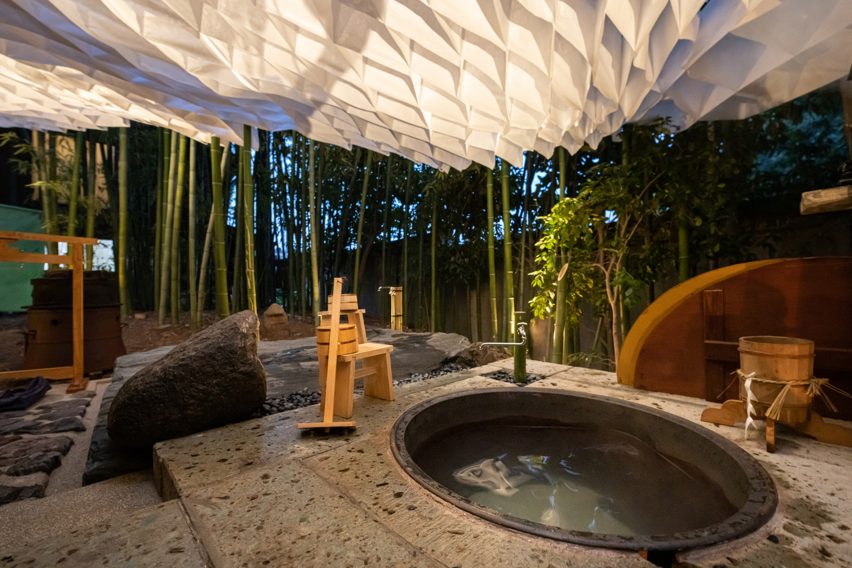
"A bathtub was placed underneath this 'fabric architecture' to create a semi-outdoor bath where visitors could play with the hot water in the filtered light," the studio continued.
"We believe that softness is necessary for buildings that are inserted into nature. We want something softer than wood, we are very interested in the possibilities of fabrics."
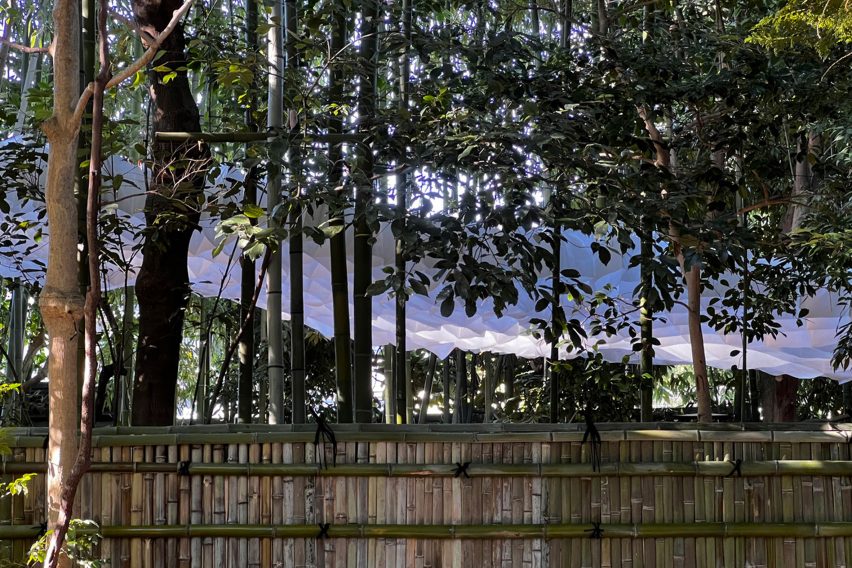
Last year, Kengo Kuma and Associates added mountain-shaped toilets and rest areas to a hiking trail that overlooks Mount Fuji.
In 2020, Japanese architect and practice founder, Kengo Kuma collaborated with artist Geoff Nees to create a circular pavilion from timber collected from Melbourne's Royal Botanic Gardens.